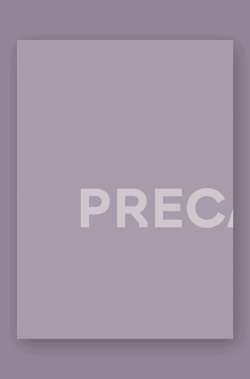A short history of singular objects
May 29, 2008

Article written by Xavier González
The history of urban planning has shown us that in any urban area, whether it be a developed or spontaneous area, three basic functions exist. These functions are residence, materialised as a group of dwellings that takes up the majority of the built-up area; activities, found in workplaces or in facility-containing places; and lastly, the flow, movement supported by the infrastructural network.
This systematisation serves to introduce the following concepts to be taken into account in urban analysis:
Differentiation
This concept springs from the distinction between unique or permanent objects and housing that was traditionally made in the urban setting. This separation is a result of the ancestral discrimination of public versus private sphere. Regarding this separation, it is interesting to note how cities were once mapped in early guides for religious pilgrims and, later on, for tourists. On those maps, one could find not only the elements specific to a certain place or the place’s topography, but also monuments and, by extension, its facilities as recognisable milestones in its urban fabric1. This means that among the singular objects, one does not find just monuments, but the buildings that house community life and that, according to their function or area of influence (neighbourhood, city, province or state), they show their purpose in the community and stand out from the rest of their surrounding fabric.
Location
The location of these singular objects in a city weaves the complexity and strengthens the quality of a public area; the urban framework is reinforced with the tension between singular objects, monuments or facilities, and the surrounding fabric2.
Even in early times, a placement method was established for facilities, based on orientation, wind or symbolic value. Vitrvius extensively studied the choice of location in Book V of his De architectura. There, he refers to the “ubicación de los edificios para uso común de toda la ciudad, como templos, foros y otros lugares de reunión de los ciudadanos”3. The locations of public buildings, theatres, the basilica, the jail, temples, or baths all appear to be justified in this outline.
The Industrial Revolution never questioned the Baroque urban model. So later on, the Modern Movement introduced, by means of zoning, the breaking up and complete separation of the singular object and the residential area. This distinction created a distance between functions that was evident in the urban planning of the time and that produced a clear imbalance between the “zones.” The result was that fragmented cities gained importance, with their residential, commercial, administrative and leisure areas all linked by transport networks.
These urban principles were called into question beginning at the 8 CIAM (1051), called The Core of the City, where returning civic values to the centres of our cities, institutional venues and catalysts of community life, was proposed.
The return of the individual to the centre of society was highlighted by José Luis Sert, who turned the medieval city into a paradigm for the future city. He did this by demonstrating the existence of one or more centres of the community, whether political, religious, cultural or leisure, at the core of the city.
The emphasis of these aesthetic and humanistic values caused him, along with Siegfried Giedion and Fernand Léger, to encourage the beginning of a new monumentality in their “Nine Points on Monumentality”4, which would represent the start of a third phase in the Modern Movement, since the preoccupation for housing units and zoning was no longer relevant.
Meanwhile, on the opposite end of the urban planning spectrum, the generation of spontaneous city fragments, as in the favelas, created saturated exclusively residential spaces, signs of an obvious urban and social divide. To integrate these areas into the rest of the urban fabric, some cities, including Rio de Janeiro, began the operation favela barrio. In this way, the purchase and subsequent demolition of some homes led to the advent of public spaces and the creation of certain facilities in the area: a plaza, a health centre, a civic centre, a school and a sports field. In the less accessible areas, the facilities have been materialised by means of temporary or mobile structures, like the buses chartered by governmental and non-governmental organisations, that can assure the citizens’ access to medical and social services.
Function
Function follows a logic that is linked to the services that are provided, which ranges anywhere from local to regional or even national.
Whatever the radius of action of the facilities, one can find a similar selection of service sectors, health, education, sport, hygiene, political or religious institutions, leisure, transport, or economy.
Function must introduce the notion of use and typology, as well as their corresponding moments of invention or change. The Industrial Revolution is the most prolific period in regards to typological inventions. During that time, striving to lay down the foundations of the new bourgeois society, the set of parameters that rule the city experienced an important transformation.
All institutions, symbols of power and all public and private facilities such as schools, universities, museums, libraries, hospitals, bathhouses, theatres, courts, jails, cemeteries, city halls or stock exchanges, were reinvented or redefined during that time.
Since all of these institutions already existed, though perhaps in a different way, they were redefined and moved to the newly created urban setting. In their own way, the rail station, commercial galleries and department stores were typological inventions of the 19th century.
Later, the 20th century would retake the whole of that typological base and would add shopping centres, airports, sports facilities and amusement parks to it. Another fundamental novelty of the century were the new centres of popular culture and local facilities, integrated into the urban fabric and based on political and social action, on education and on culture. These local services became cohesive instruments of the urban puzzle, especially when the social uses began to separate and move away.
Health and social service centres, nurseries, neighbourhood centres, meeting places for associations, educational centres, civic centres, gyms or neighbourhood libraries are facilities designed to maintain a direct relationship with the immediate surroundings. They often tend to become integrated as residential programmes or to join to form more complex entities, a true core of community life.
Such was the case of the Centri Civici created in Italy in the 1960s, the Community Centres of the Anglo-Saxon world or the French Centres Culturels, conceived to democratise culture.
Programmes and facilities for the 21st century
Just as the Renaissance replaced the spatial hierarchy of the Middle Ages with an infinite and anthropocentric space, the 19th century lived its own revolution desecrating time. We now see yet another extreme mutation, the progressive dematerialisation of space, the disconnection between body and location, and, most importantly, the demystification of traditional space, the space that served as a reference to distinguish the public sphere from the private.
This questions the future role of architecture, the representative places of a city and its new monumentality.
This new situation at the time was promoted by Michel Foucalt, who foresaw virtual development and the development of the Internet. Foucault would have been interested in the appearance and the development of a new type of public space capable of taking the place of any given traditional public service, be it administrative or cultural.
These virtual places are a utopia, since they do not have a direct analogue relationship with the actual space of society, and they are, at the same time a heterotopia, as the mirror example demonstrates5.
Cities are therefore required to integrate new uses that arise out of the virtual revolution. This involves the creation of closer and more flexible facilities in both space and function, as well as the search for a more varied axis of community life, as well as the application of renovated heterotopia.
Notes
1 “The distinction between private and universal, between individual and collective, begins with the city and its construction, its architecture”
Aldo Rossi. La arquitectura de la ciudad. Editorial Gustavo Gili, Barcelona, 1976, p.50
2 “These singular objects of architecture play a fundamental role in the dynamics of the city, since what constitutes the specific quality of urban reality arises according to the way they are placed. This means their persistence in a place, their individuality and the exact function that they carry out. Architecture represents the time of that process and makes up the visible part of this complex structure” Idem, p.132
3 Vitruve in Les 10 livres d’architecture p.147 éd. Balland, Paris, 1979
4 “Monumental architecture will be something more than strictly functional. It will have regained its lyrical value. In such monumental layouts, architecture and city planning could attain a new freedom and develop new creative possibilities, such as those that have begun to be felt in the last decades in the fields of painting, sculpture, music, and poetry”
José Luis Sert, Sigfried Giedion, Fernand Léger. “Nine points on monumentality”,1943. Published in Harvard Architecture Review, 1984
5 “We are in the epoch of simultaneity: we are in the epoch of juxtaposition, the epoch of the near and far, of the side-by-side, of the dispersed. We are at a moment. I believe, when our experience of the world is less that of a long life developing through time than that of a network that connects points and intersects with its own skein”
“The mirror is, after all, a utopia, since it is a placeless place. In the mirror, I see myself there where I am not, in an unreal, virtual space that opens up behind the surface; I am over there, there where I am not (...) But it is also a heterotopia in so far as the mirror does exist in reality, where it exerts a sort of counteraction on the position that I occupy”
Michel Foucault. Des espacies autres (1967), Hétérotopies in Architecture, Mouvement, Continuité, n°5, octobre 1984, pp. 46-49. Translated from the French by Jay Miskowiec for an exhibition in Berlin shortly before Michel Foucault’s death
Article published in a+t 29. Civilities I


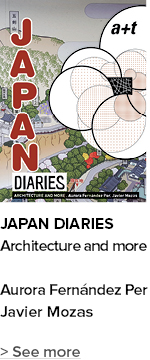
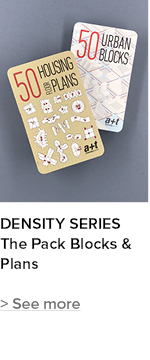

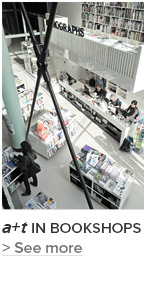
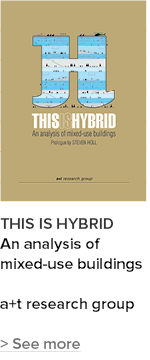


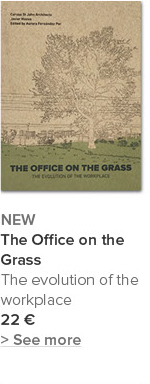
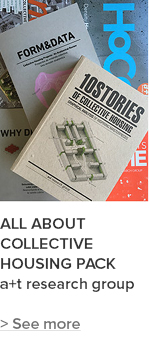
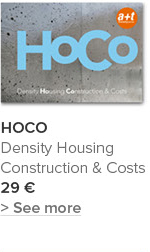
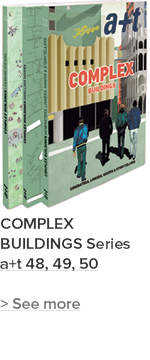

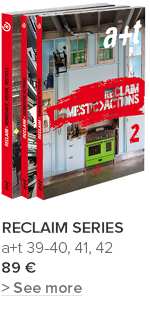
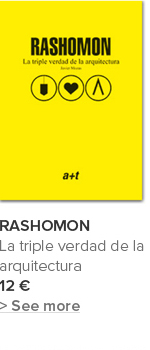
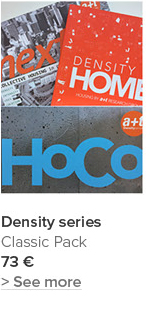





 I've read and agree to
I've read and agree to 


